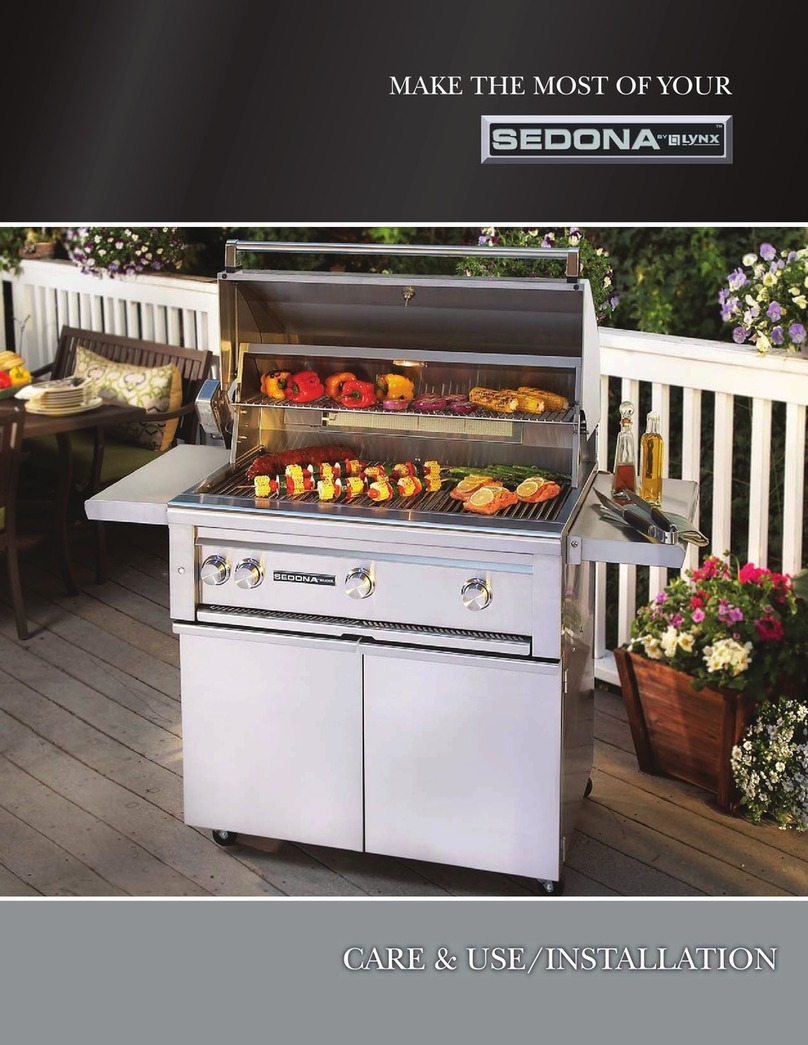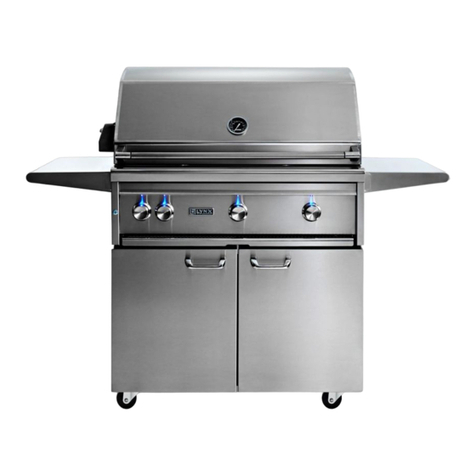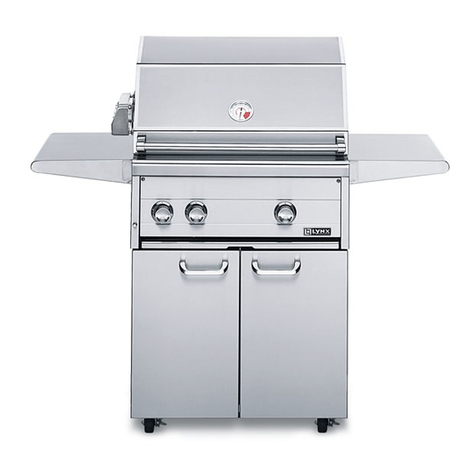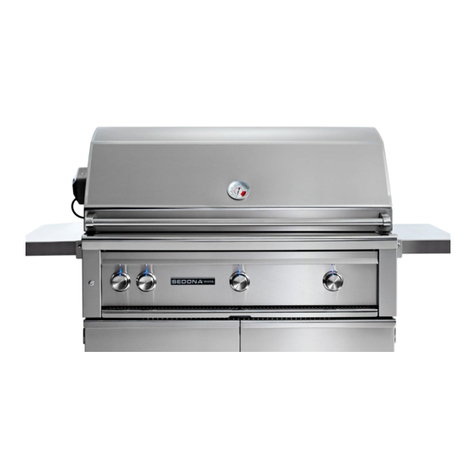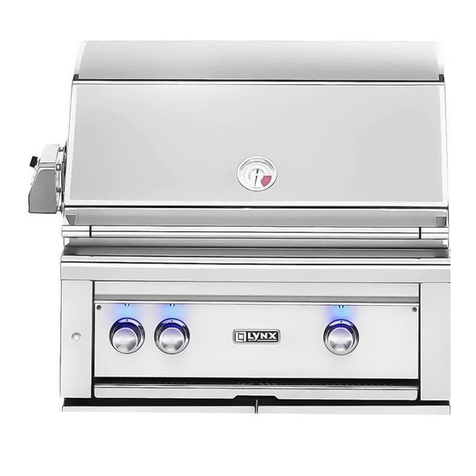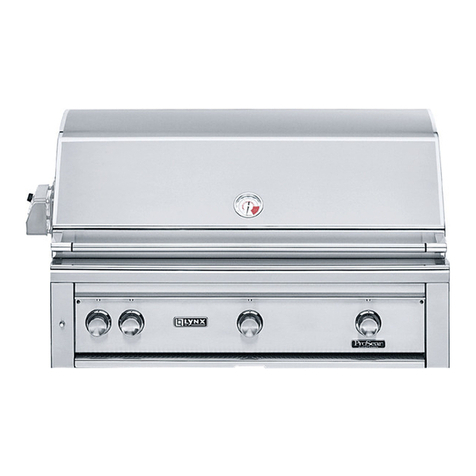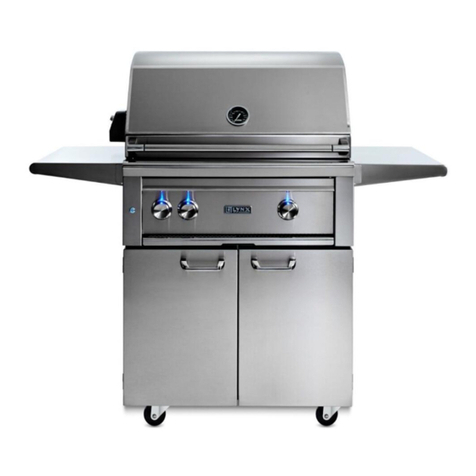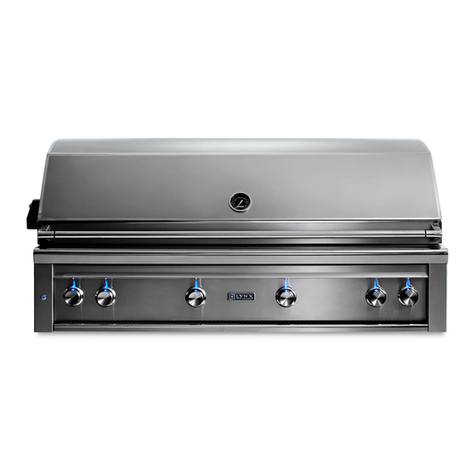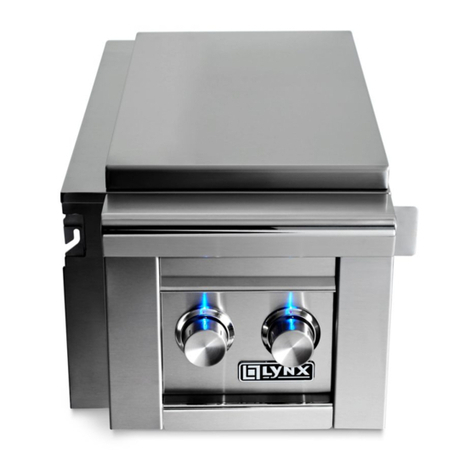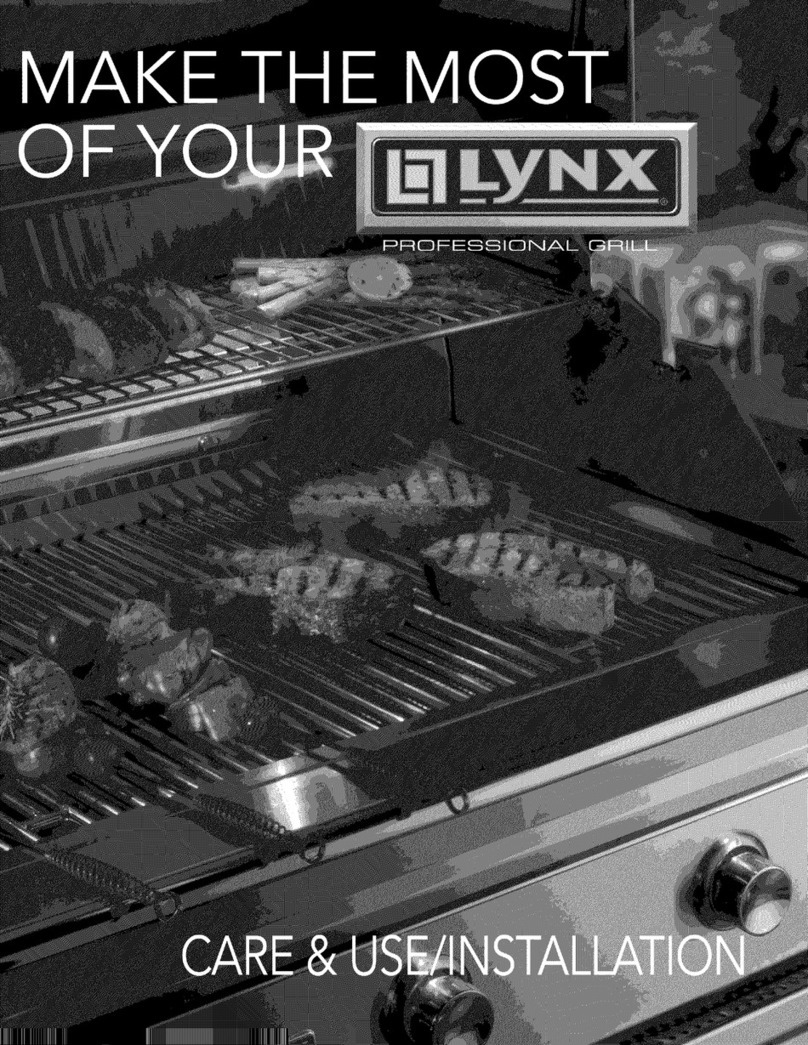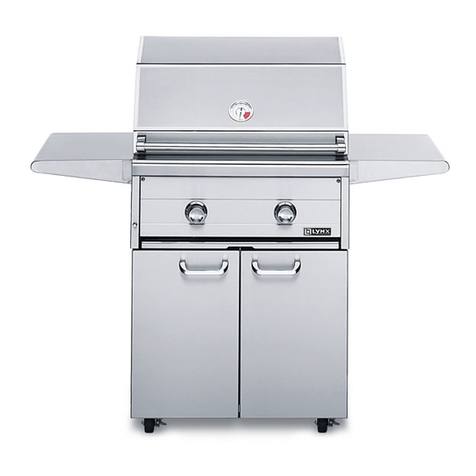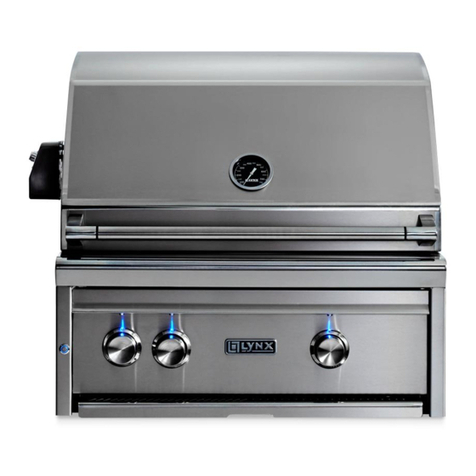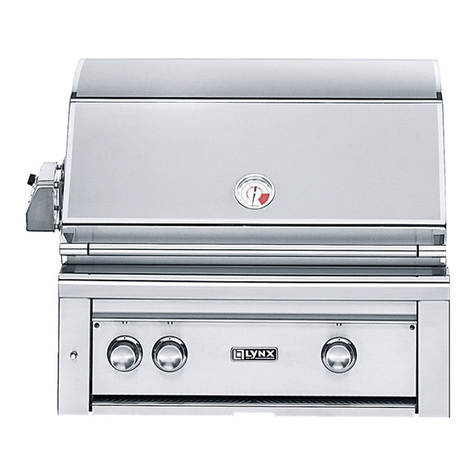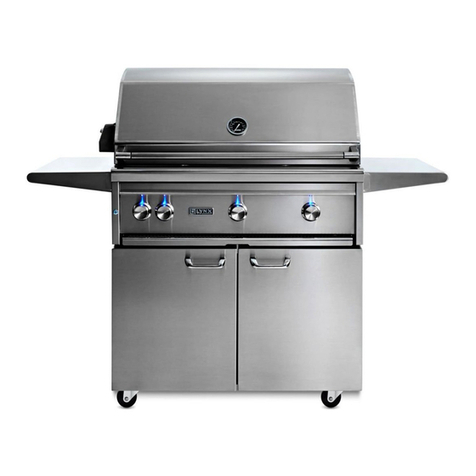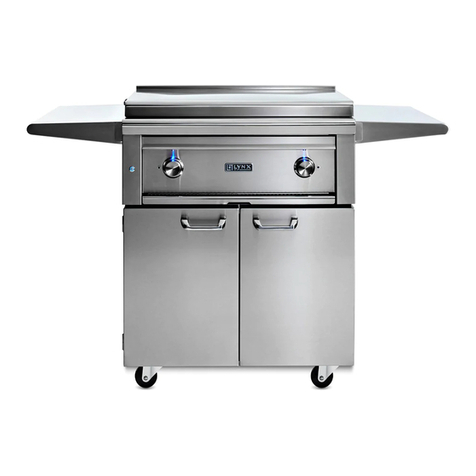
INSTALLATION / USE & CARE |7
BUILTIN INSTALLATIONS
This built-in grill is designed for easy installation into
masonry enclosures.
NOTE: Built-in grills are intended either for installation in a
built-in enclosure constructed of non-combustible materials
or for an installation in a built in enclosure constructed of
combustible material when installed with a insulating jacket).
For non-combustible applications, the grill drops into the
opening shown in the cutout detail drawing (See INDEX:
“Gas Requirements”) and hangs from its counter-top trim. A
deck is not required to support it from the bottom.
When using the insulated jacket in a combustible enclosure,
the jacket must be supported from the bottom by a ledge on
each side or a full deck beneath the jacket.
(See INDEX: “Gas Requirements”) Pay special attention to the
provisions shown for gas line hook-up.
The enclosure should have ventilation holes to prevent gas
build-up in the event of a leak. The deck ledges and counter
should be flat and level. (refer to ANSI Z21.58 Standard for
Outdoor Cooking Gas Appliances, Section 1.7 Enclosures For
Self Contained LP-Gas Supply Systems)
This grill requires that a 120 volt, 60 hertz, 15 amp GFI
certified outlet be installed by a qualified electrician.
CLEARANCE TO COMBUSTIBLE MATERIALS
Minimum clearance from the sides and back of the grill to
adjacent combustible construction below the counter top
surface is 12” from the sides and 6 1/4” from the back of the
hood.
Dégagement minimal entre les parios latérales et l’arrière de l’appariel et la
constructiohn combustible au-dessous de panneau supérieur de l’appariel (30 cm à
partir des parois latérales et 15.9 cm à partir de l’arrière de la hotte).
Minimum clearance from sides and back of grill to adjacent
combustible construction extending above the counter top
surface is 12” from the sides and 6 1/4” from the back.
Dégagement horizontal minimal entre les parios latérales et l’arrière de l’appariel
et la constructiohn verticale combustible au-dessous de panneau supérieur de
l’appariel (30 cm à partir des parois latérales et 15.9 cm à partir de l’arrière de
la hotte).
Do not use this appliance under unprotected overhead
combustible surfaces.
N’utilisez pas cet appareil sous des surfaces inflammables non protégées
A minimum of 6” of clearance is needed on the left side of
the grill above the counter top for the motor and skewer.
If the grill is to be placed into a combustible enclosure, an
approved insulated jacket is necessary and is available only
from your Lynx dealer. Insulated jackets have been designed
and tested specifically for your grill.
REAR HOOD CLEARANCE
A 3 inch clearance is required behind the grill to allow the
front hood to open.
The grill exhausts combustion products and cooking greases
to the back. Never locate the grill where this exhaust will be
dicult to clean.
OVERHEAD PROTECTION AND EXHAUST REMOVAL
If installed under any combustible construction the cooking
area over the grill must be covered with an exhaust hood.
The hood must provide 3 - 6” of overhange on all exposed
sides. The exhaust hood shall provide no less than 1,200
CFM for proper exhaust ventilation. The hood must be
approved for outdoor installation and provided with a
dedicated GFCI protected branch circuit.
BEF
RE Y
TART
n
in
e
Vent Hood
Overhead Construction
R
e
a
r
W
a
l
l
3” overhang on left and right side of grill
36” Minimum
6’ Minimum to
non-combustible
6 1/4” Clearance from the
grill back to above
counter combustibles
3”
Minimum
hood
clearance
12” clearance to combustibles from
surface level right/left/below
Combustible overhead
construction requires a
vent hood
Non-combustible overhead
construction a vent hood is
highly recommended
6 1/4”
Minimum
clearance
to combustibles
